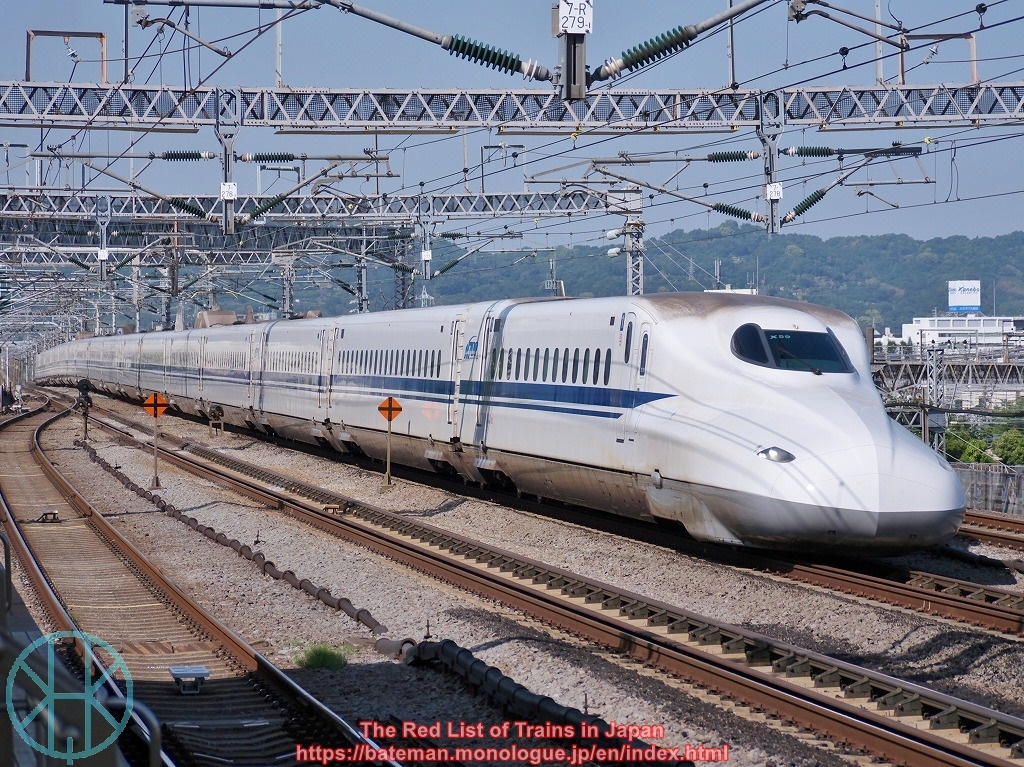N700 series Bullet Train

Data (as of 29 Nov 2025)
| Status: | Near Threatened |
| Constructed in: | 2005-20 |
| Number built: | 2,992 |
| Registered: | 2,120 |
History
*This article does not refer to N700S series, which has a similar name and appearance but different.
The N700 series was developed by JR Central and JR West as fast and comfortable high-speed train. 500 series had been running at 300 km/h (187 mph) on Sanyo Shinkansen, but they were uncomfortable. Meanwhile, Tokaido Shinkansen has too many tight curves so that it was not practical to raise the maximum speed (270 km/h, 168 mph) anymore, and thus improving acceleration was considered essential to shorten the journey time. The first N700 series unit entered service in 2007, replacing 300 series.
In 2013-20, the N700A series trains were introduced, to replace 700 series. A stands for "Advanced" and the N700A series have enhanced braking and bogie control systems, making the train even smoother and safer. Many N700 series units with no alphabet were later converted to the N700A series as well.
Some 16-car units have been converted by JR West to 8-car units since 2024, replacing the 500 series and 700 series since the following year.
There is also another group: JR West and JR Kyushu introduced eight-car units (variants 7000 and 8000) as Kyushu Shinkansen was extended in 2011. They have different livery and interior to ordinary N700 series units.
Current Operations & Future Prospects
16-car units of the N700A series are used on Tokaido and Sanyo Shinkansen, but some of them have been replaced with N700S series series since 2020. The N700A series units shortened by JR West to eight coaches are used for Kodama between Shin-Osaka and Hakata as well as Hakata-Minami Line.
Variants 7000 and 8000 are used for Mizuho (fast) and Sakura (semi-fast) services on Sanyo and Kyushu Shinkansen, as well as some Hikari and Kodama services on Sanyo Shinkansen. They are also used for some Tsubame (stopping) services on Kyushu Shinkansen.
Photo

The variant 7000 is owned by JR West. The variant 8000 owned by JR Kyushu also looks almost identical.
(Updated: 29 Nov 2025)
